
Wire Weave Combination - Framed Netting
- Category: Weaving
- Technique(s): Weaving
- Skill Level: Intermediate
A broken dragon vein cabochon forced me to create an excellent solution...
Gemstone cabochons - even though they are 'rock' - can sometimes be fragile. Though it is unusual, some stones can easily break across an unseen fracture line. I was able to almost invisibly repair this stone, but needed a very sturdy, but simple and elegant bezel to firmly hold it. The 'cab' was translucent, so allowing as much light as possible 'into' the stone (through the sides) would show it best. After some experimentation, I devised the 'Framed Netting Weave' to solve these problems, and want to share it with you.
Gemstone cabochons - even though they are 'rock' - can sometimes be fragile. Though it is unusual, some stones can easily break across an unseen fracture line. I was able to almost invisibly repair this stone, but needed a very sturdy, but simple and elegant bezel to firmly hold it. The 'cab' was translucent, so allowing as much light as possible 'into' the stone (through the sides) would show it best. After some experimentation, I devised the 'Framed Netting Weave' to solve these problems, and want to share it with you.
Materials

26 Gauge Round Dead Soft Copper Wire
H11-26D
- Lesson Quantity: 15.00 feet
- Purchase Quantity: 1.00 10FT
- Price: $1.23
- Gold Club Price: $0.93

20 Gauge Half Round Half Hard Copper Wire
H11-20HRH
- Lesson Quantity: 5.00 feet
- Purchase Quantity: 1.00 5FT
- Price: $2.22
- Gold Club Price: $1.67
Tools

WireJewelry - Ultimate Wire-Pliers Jewelry Pliers with Case, Set of 5
G15-20
- G15-20
- Lesson Quantity: 1.00 pieces
- Purchase Quantity: 1.00 each
- Price: $170.72
- Gold Club Price: $128.04
Instructions
Step 1:
Using a bead to maintain width. Make 'anchor coils' on wires
I used 20 gauge copper wire for the base wires, and 26 gauge for the weaving wire. This photo shows the 'setup': I've made some 'anchor' coils on the #1 wire, then slipped a bead onto the wire. (Bend a small curl in the right end of the 'bead wire', to keep the bead from sliding off.) I needed about a 4mm 'gap' for the netting, so I chose an 8mm bead. Note that only the top half of the bead is holding the 4mm space needed. I then wrapped some anchor coils on the #2 wire.
These 'anchor coils' help me stabilize the width of the gap. They may not be a part of the actual weave pattern - just a way to firmly hold the wire as I begin weaving. In this pattern, I have wrapped only half of the coils that are used in the pattern, as a starting point. If I find that I need a 'complete' pattern on that end of the weave, I can easily unwind these anchor coils, if needed.
These 'anchor coils' help me stabilize the width of the gap. They may not be a part of the actual weave pattern - just a way to firmly hold the wire as I begin weaving. In this pattern, I have wrapped only half of the coils that are used in the pattern, as a starting point. If I find that I need a 'complete' pattern on that end of the weave, I can easily unwind these anchor coils, if needed.

Step 2
Make 1 coil over both the #2 and #3 wires, bringing the wire out between 2 & 3, and behind #1.

Step 3
Make 4 coils on #2, then end by bringing the 5th wrap down to #1, and making 1 coil to anchor it. The bottom coils will be pushed to the left to form the "V" shaped netting.


Step 4
NOTE: In order to make the netting fit closer to the cabochon edge, you will switch from 'under' to 'over' wraps - so the weaving wire properly feeds to the next step. See the position of the wire in the photos. Make 5 more coils on wire #1, ending with a 6th wrap that brings the weaving wire up and over Wire #1, and under #2 & #3. As you work, compress the coils and move the bottom coils to the left, to close the space.
Make a wrap over wires #2 and #3 - as in Step 2, and begin the process again. Keep the frame wires straight, just touching the bead if you are using it for spacing. Keep an even tension on the weaving wire, so it will be as straight as possible. Continue weaving until you have the necessary length needed.
Make a wrap over wires #2 and #3 - as in Step 2, and begin the process again. Keep the frame wires straight, just touching the bead if you are using it for spacing. Keep an even tension on the weaving wire, so it will be as straight as possible. Continue weaving until you have the necessary length needed.

Step 5
Before placing the cabochon in the bezel, the upper portion (wires #2 & #3) is bent at a 90 degree angle, to form the 'frame'. Use wide, flat-nose pliers with tips only on the frame edge to make small bends around the frame. Bend the frame a little at a time, then a little more, until it is the desired shape, working around the frame as you bend 30 degrees, then 60 degrees, etc.
You may find that the 'netting' wires buckle slightly, which is helpful if your cabochon edges are curved. You may even need to form a slightly deeper 'channel' on the inside of the netting for a better fit. If you want to straighten the netting a little, place pointed chain nose pliers, while closed, into the netting and open them slightly, to 'pry' the two frame wires apart slightly. Take care - this is a delicate procedure.
You may find that the 'netting' wires buckle slightly, which is helpful if your cabochon edges are curved. You may even need to form a slightly deeper 'channel' on the inside of the netting for a better fit. If you want to straighten the netting a little, place pointed chain nose pliers, while closed, into the netting and open them slightly, to 'pry' the two frame wires apart slightly. Take care - this is a delicate procedure.

Step 6
Once the bezel is in place, the 'bent' frame lightly holds, and decorates, the front of the stone. I used a 3-loop spacing on this bezel, to show more contrasting wire on the front. The 5-loop spacing (in these directions) shows less wire and is more 'delicate' in appearance.

Step 7
The repaired dragon vein stone, after wrapping, showing a 'clean' back with netted sides. The fracture occurred in the upper third of the stone - surprisingly, not along one of the veins. Fortunately, the repair is almost invisible. Being 'damaged', it cannot be sold, but my daughter, the intended recipient, is delighted to have it.









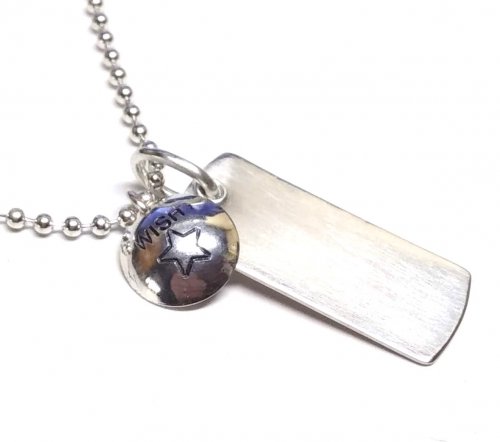
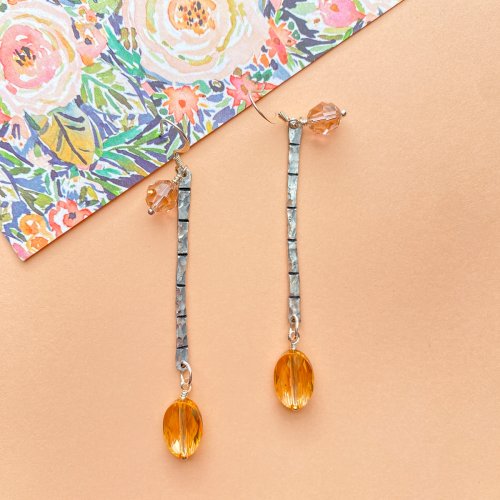
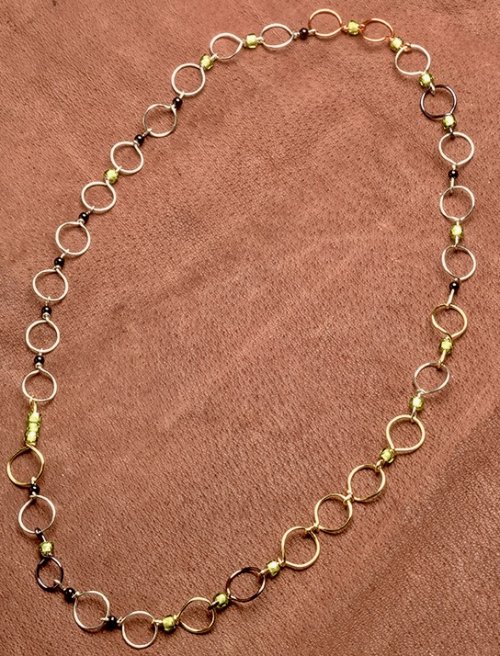



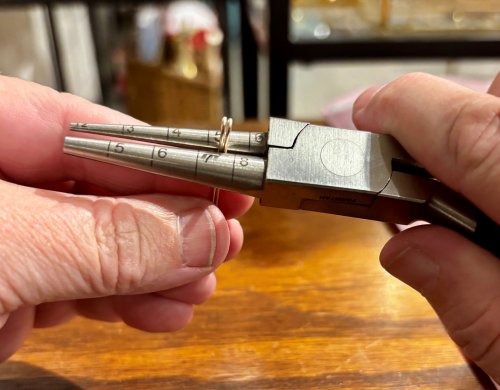




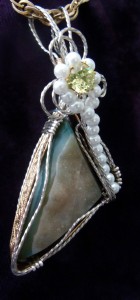

 Echo 8 Link
Echo 8 Link
